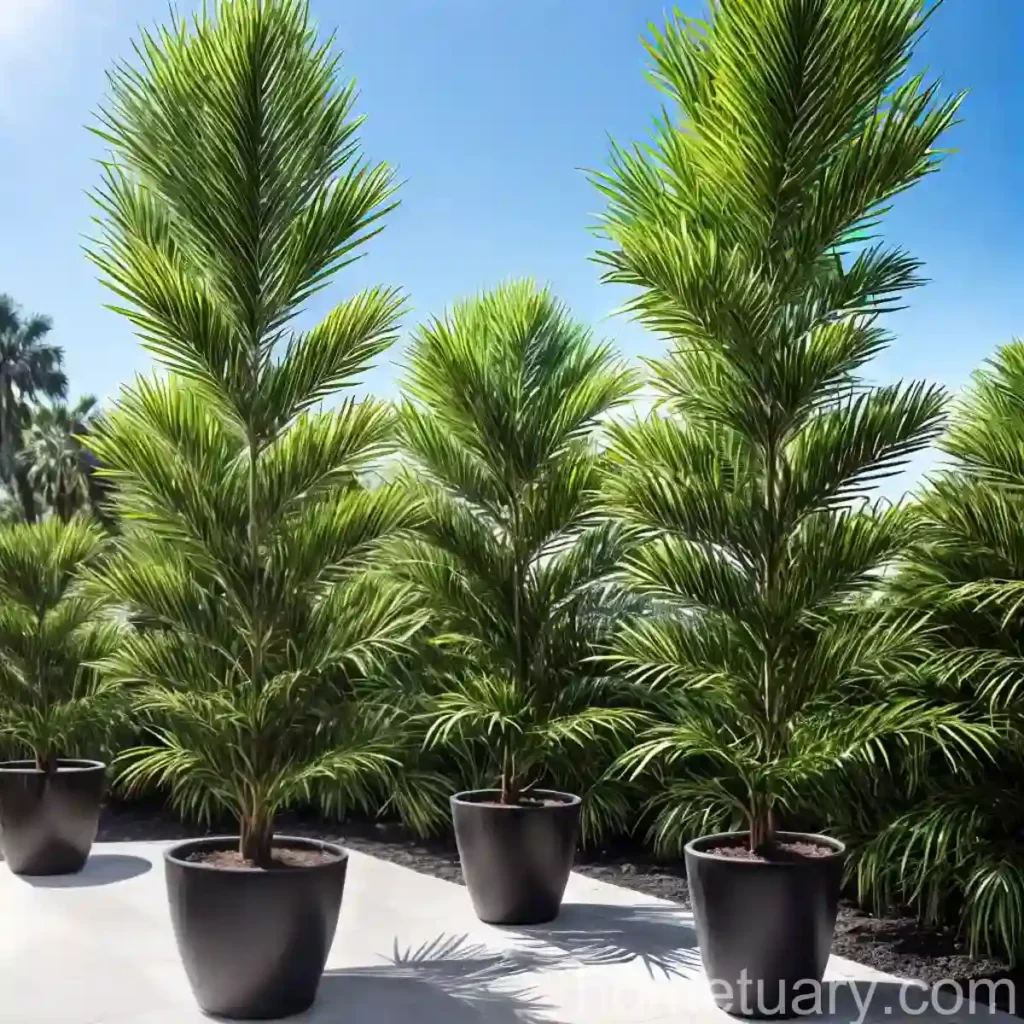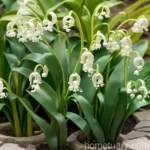The Enigmatic Mountain Palm (Cordyline Indivisa): A Complete Guide to Care and Cultivation
Introduction
Plants are a fundamental part of our environment, offering beauty, oxygen, and an array of resources and benefits. Among the diverse flora that graces our planet, the mountain palm, or Cordyline indivisa, stands out as a striking and versatile plant. With its majestic appearance and multitude of uses, this plant has earned its place in gardens, landscapes, and even indoor settings.
In this comprehensive guide, we will explore everything there is to know about the mountain palm (Cordyline indivisa) – from its characteristics and care requirements to its cultural significance and practical uses. By the end of this exploration, you will have a thorough understanding of how to best cultivate and appreciate this remarkable plant.
What is Cordyline Indivisa?
Cordyline indivisa, commonly known as the mountain palm, is a species of flowering plant in the Asparagaceae family. Despite its common name, it is not a true palm, but rather a striking evergreen plant native to New Zealand. Its long, sword-shaped leaves and upright growth habit give it a palm-like appearance, hence the name “mountain palm.”
Key Characteristics of Cordyline Indivisa
- Brilliant green foliage
- Long, lance-shaped leaves
- Upright, palm-like growth habit
- Evergreen nature
The mountain palm is known for its dramatic foliage, which makes it a captivating addition to any landscape, whether as a standalone specimen or as part of a larger planting scheme.
Culture
Uses
The mountain palm (Cordyline indivisa) holds cultural and practical significance in various contexts. It is primarily valued for its ornamental beauty, but it also boasts several other noteworthy uses:
-
Ornamental Plant: Its striking appearance and architectural shape make it a popular choice for landscaping and garden design.
-
Traditional Symbolism: In its native New Zealand, the mountain palm holds cultural significance and is sometimes used in traditional ceremonies and rituals.
-
Foliage: The long, lance-shaped leaves of Cordyline indivisa can be used in floral arrangements, adding a touch of tropical elegance to indoor displays.
-
Wildlife Habitat: The plant provides habitat and food for various wildlife species, contributing to the ecosystem in which it grows.
Water
Proper watering is essential for the health and vitality of the mountain palm. While it is a relatively resilient plant, it thrives when provided with consistent moisture, especially during the growing season. Here are some essential tips for watering Cordyline indivisa:
-
Established Plants: Water deeply and infrequently, allowing the soil to dry out slightly between waterings to prevent waterlogged conditions.
-
Newly Planted Specimens: Keep the soil consistently moist to support root establishment and minimize transplant shock.
-
Avoid Overwatering: While the mountain palm appreciates moisture, it is susceptible to root rot if subjected to waterlogged conditions. Ensure that the planting site offers good drainage.
Sunlight
Mountain palms thrive in bright, indirect light. When grown outdoors, they prefer a location with partial shade, especially during the hottest part of the day. In indoor settings, they do well in bright, indirect light near a window.
Sunlight Preferences:
- Outdoors: Partial shade with dappled sunlight
- Indoors: Bright, indirect light
Providing the right amount of sunlight is crucial for the plant’s overall health and for promoting robust growth and vibrant foliage.
Fertilizer
Fertilizing mountain palms can help encourage healthy growth and vibrant foliage. A balanced, slow-release fertilizer designed for ornamental plants can be applied during the growing season. Here are some key considerations for fertilizing Cordyline indivisa:
-
Application Frequency: Apply fertilizer in spring, following the manufacturer’s recommendations for the specific product used.
-
Even Distribution: Distribute the fertilizer evenly around the root zone, avoiding direct contact with the plant’s stem or foliage.
-
Avoid Overfertilization: Excessive fertilization can lead to salt buildup in the soil, potentially harming the plant. Use fertilizers sparingly and according to the recommended dosage.
Soil
Mountain palms thrive in well-draining, slightly acidic soil with a rich organic content. When cultivating Cordyline indivisa, consider the following soil requirements:
-
Well-Draining: Ensure that the soil provides good drainage to prevent waterlogging, which can lead to root rot.
-
Organic Matter: Incorporate compost or well-rotted organic matter into the soil when planting or repotting to boost fertility and improve soil structure.
-
Acidic pH: Aim for a slightly acidic soil pH in the range of 6.0 to 6.5 for optimal growth.
Pruning
Pruning Cordyline indivisa is primarily conducted for maintenance and to remove old or damaged foliage. The following pruning tips can help keep the plant looking its best:
-
Removing Dead Leaves: Trim off any brown or yellowing leaves as needed to maintain the plant’s appearance.
-
Pruning Overgrown Specimens: In some cases, mature mountain palms may become overcrowded, requiring selective pruning to thin out the foliage and maintain an open growth habit.
-
Sanitize Tools: Always use clean, sharp pruning tools to minimize the risk of disease transmission and to create clean cuts that promote swift healing.
Propagation
Mountain palms can be propagated through various methods, including stem cutting and seed propagation. Each method has its own specific requirements and considerations:
-
Stem Cutting: Propagation by stem cuttings involves taking a section of the plant’s stem with several leaf nodes and rooting it in a suitable growing medium.
-
Seed Propagation: Germinating seeds offers another method of propagating Cordyline indivisa, although it may take longer to produce mature plants compared to stem cuttings.
Container Popularity
The mountain palm’s striking appearance and versatility make it well-suited for container cultivation. Whether grown indoors or on patios and balconies, it can serve as a captivating focal point. Consider the following factors for successful container cultivation:
-
Container Size: Choose a container that accommodates the plant’s root system and allows for ample growth. A larger container also provides stability for the tall, upright growth habit of Cordyline indivisa.
-
Drainage Holes: Select a container with drainage holes to prevent waterlogged conditions, ensuring that excess moisture can readily escape.
-
Potting Mix: Use a well-draining potting mix designed for container plants, preferably one that is slightly acidic and enriched with organic matter.
Common Diseases
While generally resistant to many common plant diseases, the mountain palm may be susceptible to certain issues under specific conditions. Understanding these potential diseases can help diagnose and address problems promptly.
Disease Diagnosis:
-
Root Rot: Caused by waterlogged conditions, leading to decay of the plant’s roots. Symptoms include wilting, yellowing foliage, and a foul odor from the soil.
-
Leaf Spot: Fungal diseases such as Cercospora leaf spot can cause dark lesions on the foliage. Prune and remove affected leaves and ensure good air circulation to prevent the spread of the disease.
-
Petal Blight: In some instances, Cordyline indivisa may develop petal blight, characterized by the browning and wilting of flowers.
Common Pests
The mountain palm is relatively resistant to pests, but occasional infestations by certain insects may occur. Identifying and addressing these pests promptly can prevent damage and promote the plant’s health.
Common Pests:
-
Aphids: These small, sap-sucking insects may cluster on the undersides of leaves, causing distortion and yellowing of the foliage.
-
Scale Insects: Scale insects can attach themselves to the stems and leaves, feeding on the plant’s sap and potentially causing stunted growth and yellowing.
-
Mealybugs: Mealybugs are small, cottony insects that feed on plant juices, potentially causing stunted growth and leaf distortion.
Botanist’s Tips
To care for Cordyline indivisa and ensure its optimal growth and beauty, consider the following tips:
-
Monitor Moisture: Regularly check the soil moisture to maintain consistent, adequate hydration for the plant.
-
Inspect Foliage: Periodically examine the foliage for signs of disease or pest infestation, taking prompt action if any issues are detected.
-
Pruning Care: Use sharp, clean pruning tools when removing dead or damaged leaves, and avoid overpruning, which can stress the plant.
-
Cultural Requirements: Familiarize yourself with the specific cultural needs of the mountain palm, including sunlight preferences, soil requirements, and fertilization.
Fun Facts
As you cultivate and admire the mountain palm, consider these intriguing facts about this unique plant:
-
Despite the common name “mountain palm,” Cordyline indivisa is not a true palm but rather a member of the Asparagaceae family.
-
The striking, upright growth habit and vibrant foliage of Cordyline indivisa make it a standout feature in both indoor and outdoor settings.
-
In its native New Zealand, the mountain palm holds cultural significance and is sometimes used in traditional Maori ceremonies and rituals.
Links to External Resources
To further expand your knowledge and appreciation of the mountain palm (Cordyline indivisa), explore the following resources:
- Royal Horticultural Society – Cordyline Indivisa
- University of Florida Extension – Cordyline Cultivation Guide
- American Society for the Prevention of Cruelty to Plants – Mountain Palm Care Tips
In conclusion, the mountain palm (Cordyline indivisa) is a captivating and versatile plant that offers aesthetic beauty, cultural significance, and practical uses. By understanding its specific care requirements and appreciating its unique characteristics, you can cultivate and showcase this remarkable plant in various settings, from gardens and landscapes to indoor displays. Whether you’re drawn to its vibrant foliage, its ornamental value, or its ecological contributions, the mountain palm stands as a testament to the diversity and appeal of the plant kingdom.















